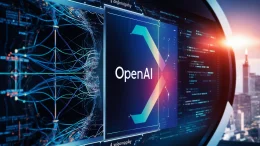The most critical missing piece of Salesforce.com’s emerging cloud service last year was filled with the acquisition of Jigsaw, a vast repository of crowdsourced data on companies and their employees. Keeping Microsoft’s hands off of Jigsaw prevented it from possibly owning another majority stake in an emerging market – in this case, CRM.

But among the most promoted pieces of Salesforce’s buildout strategy last August at its annual conference came not from the crowd at large, but from the research firm of Dun & Bradstreet. It promised to help Salesforce build Data.com into a service that fills all the little gaps that crowdsourcing leaves behind. Now, D&B is building out in a new direction, with a Web services API called D&B Direct.
Its goal is to enable clients to use their own applications, including the ones they build themselves, to utilize live, professionally researched data on the world’s businesses.
“We have a Web services infrastructure, and we’ll make it available via interface for developers. And as you would expect, we’ll be building out the infrastructure to help those developers with all the necessary documentation and the sandboxes, so that they can play around with it, and understand the data and how best to leverage it,” says Mike Sabin, senior vice president of global sales and marketing solutions for D&B, in an interview with RWW.
There will be two classes of customer for the D&B Direct API: one which consists of developers who make use of the data, and another (which may overlap) that includes partners who may enter into marketing agreements similar to that between D&B and Salesforce. As Sabin tells us, companies may choose to partner with D&B’s sales team, enabling them to sell their applications while D&B sells data services to their same customers. Alternately, D&B may develop applications that integrate with partners’ existing platforms. “I think we’ll see a variety of models,” he says, “based upon the various needs of those select customer bases, and the capabilities of those partners.”
The consumption model
The data will be available through the Direct API under the user’s choice of licenses. “In some cases, a per-seat with certain throttles on it, may make the most sense; [or] in others, a pure consumption model,” says Sabin. “We’ve created it such that we can support different models based upon the segments that we’ll be servings. For pure customer custom development, where one of our Direct customers is looking to leverage this to build out within their own infrastructure, it would likely be a pure consumption model.”
In an environment where both the cost and the value of crowdsourced data appear to be increasing steadily, how does D&B justify the “value-add” for its data services above and beyond what Jigsaw, or something on that level, may provide? It’s a question this publication has asked before, and which my colleague David Strom calculated to be “just a big nothing.”
The crowdsourcing “ceiling”
“I think crowdsourcing, based upon what we’ve observed in the market, tends to have a natural ceiling,” responds D&B’s Mike Sabin. “We saw it with Wikipedia, where that’s tapering off and people are projecting that that will flatten out and start to decline. I think we’ve seen it in the contacts space as well, where those crowdsourced entities are starting to slow.
“The other piece is, there are certain data sets and data topics that are conducive to crowdsourcing, and others that are not,” the VP continues. “I think the value that D&B provides is twofold: First, we tend to play in spaces where a lot of the data we collect is not conducive to crowdsourcing.” As a case-in-point, Sabin offers a scenario where two people have a conversation and exchange business cards at the end. One party uploads the data from one card to Jigsaw. Business cards don’t update themselves, so the freshness of that data will only decline over time.
What’s more, Sabin adds, the name of the business on the card may not explain itself. “It’s not conducive to crowdsourcing to know if [that business] has any sister companies or parent companies or subsidiaries, [or] to know what the company’s SIC code is, [or] to be able to identify how many employees you have, or your potential for financial risk. I think there’s a lot of topics that [make it] important to have other collection and, importantly, quality confirmation tools surrounding it, to make sure it is valid and accurate information.”
“I think crowdsourcing, based upon what we’ve observed in the market, tends to have a natural ceiling.”
Mike Sabin
VP for Sales & Marketing, Dun & Bradstreet
Next, Sabin offers this: The act of research itself is like journalism to some extent – gleaning information and insight from available data, rather than simply reciting or repeating what’s there.
“It’s important to be able to put any of this information into an arbiter that helps you provide context,” Mike Sabin tells RWW. “What we saw through the partnership with Salesforce.com, and the reason it makes sense for both parties, [is because] they had good contact information. They did not have particularly good quality company information. So as they wanted to tie these contacts together, in the context of a company, they struggled and, in turn, their customers struggled. D&B has built out this infrastructure that allows us to identify companies, track them over time, link pieces of data to those companies, and put them in the broader context of their corporate hierarchies, so that you can see the entire picture. I think being able to use those things as ‘coat hangers,’ if you will, on which you can hang additional pieces of information, becomes very important with the coming explosion of data that everybody’s seeing down the pike.”

















